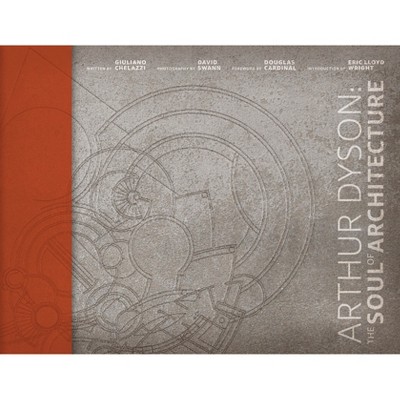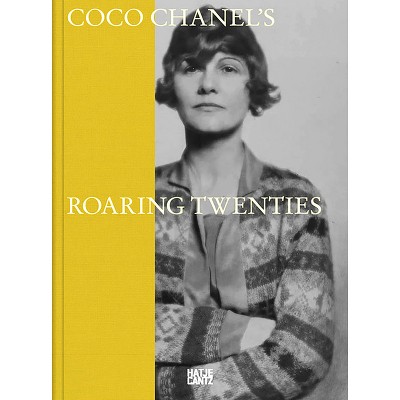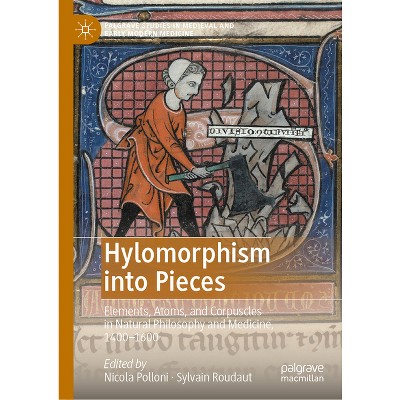Sponsored

Bravura - by Nicola Suthor (Hardcover)
$71.00Save $4.00 (5% off)
In Stock
Eligible for registries and wish lists
Sponsored
About this item
Highlights
- The first major history of the bravura movement in European painting The painterly style known as bravura emerged in sixteenth-century Venice and spread throughout Europe during the seventeenth century.
- About the Author: Nicola Suthor is professor of art history at Yale University.
- 304 Pages
- Art, History
Description
Book Synopsis
The first major history of the bravura movement in European painting
The painterly style known as bravura emerged in sixteenth-century Venice and spread throughout Europe during the seventeenth century. While earlier artistic movements presented a polished image of the artist by downplaying the creative process, bravura celebrated a painter's distinct materials, virtuosic execution, and theatrical showmanship. This resulted in the further development of innovative techniques and a popular understanding of the artist as a weapon-wielding acrobat, impetuous wunderkind, and daring rebel. In Bravura, Nicola Suthor offers the first in-depth consideration of bravura as an artistic and cultural phenomenon. Through history, etymology, and in-depth analysis of works by such important painters as Franҫois Boucher, Caravaggio, Francisco Goya, Frans Hals, Peter Paul Rubens, Tintoretto, and Diego Velázquez, Suthor explores the key elements defining bravura's richness and power. Suthor delves into how bravura's unique and groundbreaking methods--visible brushstrokes, sharp chiaroscuro, severe foreshortening of the body, and other forms of visual emphasis--cause viewers to feel intensely the artist's touch. Examining bravura's etymological history, she traces the term's associations with courage, boldness, spontaneity, imperiousness, and arrogance, as well as its links to fencing, swordsmanship, henchmen, mercenaries, and street thugs. Suthor discusses the personality cult of the transgressive, self-taught, antisocial genius, and the ways in which bravura artists, through their stunning displays of skill, sought applause and admiration. Filled with captivating images by painters testing the traditional boundaries of aesthetic excellence, Bravura raises important questions about artistic performance and what it means to create art.Review Quotes
"[A] pioneering book. . . . this brilliant and well-illustrated book confirms that bravura was one of the most cognitively demanding techniques of Renaissance painting. The brilliance of Suthor's analysis lies in her fresh terminology and perceptive language of description of even the smallest and most easily overlooked details of composition, and in her critical ability to relate such intricacies to larger issues taken up in paintings and in criticism. She writes in engaging, precise language, and makes persuasive connections with contemporary art criticism and modern aesthetics and cultural theory."---Goran Stanivukovic, Renaissance and Reformation
"I learned a great deal from Bravura, enjoyed [Suthor's] in-depth descriptions of paintings, and found myself entertained by the many anecdotes quoted. Her skill at integrating theory and practice is commendable and provides a service to the theorists and biographers who were artists themselves."---Janis Bell, Renaissance Quarterly
"Bravura surveys the breadth of meaning that bravura conveys, probing the subtleties of the concept from multiple viewpoints. . . . This breadth, which makes it possible to see patterns and similarities over centuries and national boundaries, is refreshing in our age of narrowly defined specialist studies and helps us see the consistency over longer periods in European art, something that is often lost in our focus on differences. . . . [Suthor's] skill at integrating theory and practice is commendable and provides a service to the theorists and biographers who were artists themselves, reminding those who would study paintings in isolation from the ideas valued by their makers that they do so at serious peril."---Janis Bell, Renaissance Quarterly
"Suthor invigorates this subject in myriad ways, not least by the sheer verve of her writing and the ambition of her project. The book is itself a bravura performance, galloping through several centuries of European art history with considerable wit and erudition."---Alexander Marr, Apollo Magazine
About the Author
Nicola Suthor is professor of art history at Yale University. She is the author of Rembrandt's Roughness (Princeton).Dimensions (Overall): 10.8 Inches (H) x 8.3 Inches (W) x 1.0 Inches (D)
Weight: 3.05 Pounds
Suggested Age: 22 Years and Up
Sub-Genre: History
Genre: Art
Number of Pages: 304
Publisher: Princeton University Press
Theme: Renaissance
Format: Hardcover
Author: Nicola Suthor
Language: English
Street Date: February 2, 2021
TCIN: 1003041560
UPC: 9780691204581
Item Number (DPCI): 247-48-7401
Origin: Made in the USA or Imported
If the item details aren’t accurate or complete, we want to know about it.
Shipping details
Estimated ship dimensions: 1 inches length x 8.3 inches width x 10.8 inches height
Estimated ship weight: 3.05 pounds
We regret that this item cannot be shipped to PO Boxes.
This item cannot be shipped to the following locations: American Samoa (see also separate entry under AS), Guam (see also separate entry under GU), Northern Mariana Islands, Puerto Rico (see also separate entry under PR), United States Minor Outlying Islands, Virgin Islands, U.S., APO/FPO
Return details
This item can be returned to any Target store or Target.com.
This item must be returned within 90 days of the date it was purchased in store, shipped, delivered by a Shipt shopper, or made ready for pickup.
See the return policy for complete information.
Frequently bought together

$23.63
MSRP $30.00
Buy 2, get 1 free select books, music & movies
4.9 out of 5 stars with 40 ratings

$21.32
MSRP $40.00
Buy 2, get 1 free select books, music & movies
2.7 out of 5 stars with 3 ratings
Trending Non-Fiction


$19.31
was $20.98 New lower price
Buy 2, get 1 free select books, music & movies
4 out of 5 stars with 60 ratings

$19.58
MSRP $29.00
Buy 2, get 1 free select books, music & movies
4.6 out of 5 stars with 13 ratings

$4.59
MSRP $7.99
Buy 2, get 1 free select books, music & movies
4.8 out of 5 stars with 120 ratings

$6.20
MSRP $10.95
Buy 2, get 1 free select books, music & movies
4.8 out of 5 stars with 33 ratings

$7.09
MSRP $9.99
Buy 2, get 1 free select books, music & movies
4.9 out of 5 stars with 46 ratings
Discover more options

$13.60 - $14.90
MSRP $17.00 - $28.00
Buy 2, get 1 free select books, music & movies
4.3 out of 5 stars with 3 ratings








